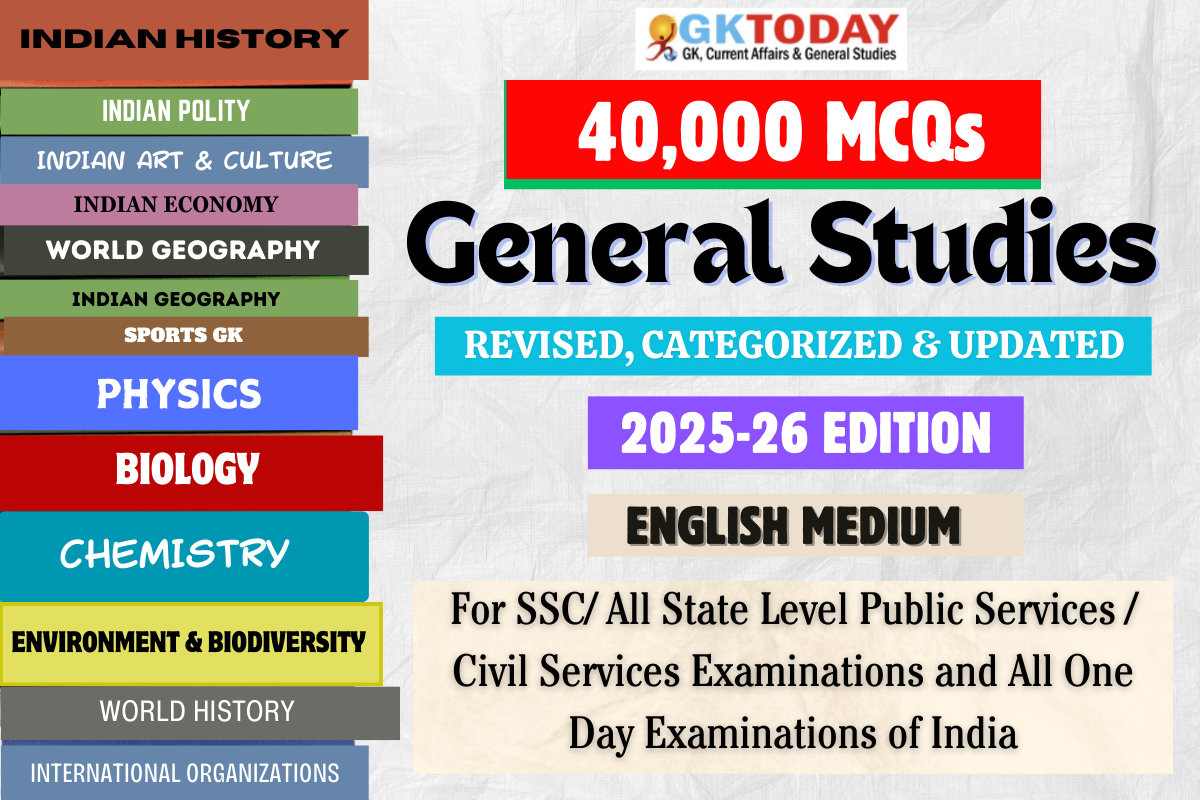Modern Indian History MCQs
Multiple choice questions on Modern Indian History & Freedom Struggle for General Studies and GK preparation of SSC, NDA, CDS, UPSC, UPPSC and State PSC Examinations.
31. Which of the following is considered as the organizer of the Sikh Confederacy and the Dal Khalsa?
[A] Jassa Singh Ahluwalia
[B] Banda Bahadur
[C] Kapur Singh
[D] Ranjit Singh
Show Answer
Correct Answer: C [Kapur Singh]
Notes:
Nawab Kapur Singh is considered as one of the major figures in Sikh history. Under the leadership Kapur Singh the Sikh community traversed one of the darkest periods of its history. He gradually established a robust revenue and military system.
32. What was the motive of the British East India Company when they came to India?
[A] Trade and territory
[B] Trade, not territory
[C] Only territory
[D] None of the above
Show Answer
Correct Answer: B [Trade, not territory]
Notes:
In the year 1600 CE, the East India Company was formed and was given the exclusive right to trade with India and South East Asia after Queen Elizabeth I granted the charter for the monopoly over the trade. Initially, the motive of the British East India Company was Trade, not territory.
33. Which of the following founded the independent state of Awadh?
[A] Shujauddaula
[B] Aasfuddaula
[C] Safdarjung
[D] Saadat Khan
Show Answer
Correct Answer: D [Saadat Khan]
Notes:
Saadat Khan popularly known as Burhan-ul-Mulk founded the independent state of Awadh. He had joined in a conspiracy against the Sayyid brothers and therefore was driven out of the court.
34. Which of the following had started the Public Works Department in India in 1848?
[A] Lord William Bentinck
[B] Lord Dalhousie
[C] Lord Wellesley
[D] Lord Cornwallis
Show Answer
Correct Answer: B [Lord Dalhousie]
Notes:
The Public Works Department in India in 1848 was started by Lord Dalhousie. Before this, the job of the Public Works Department was done by the Military Board. Dalhousie created a separate Public Works Department and allotted more funds for making canals and roads.
35. In which year ‘Hindustan Socialist Republican Army’ was founded?
[A] 1919
[B] 1927
[C] 1916
[D] 1928
Show Answer
Correct Answer: D [1928]
Notes:
‘Hindustan Socialist Republican Army’ was founded in 1928. Hindustan Socialist Republican Association (HSRA) was a revolutionary organisation, also known as the Hindustan Socialist Republican Army, established at Feroz Shah Kotla in New Delhi by Chandrasekhar Azad, Ashfaqulla Khan, Bhagat Singh, Sukhdev Thapar and Jogesh Chandra Chatterjee.
36. Under which of the following acts, a Special Court was established to try in England any offences committed in India?
[A] Regulating Act, 1773
[B] Amending Act, 1781
[C] Amending Act, 1786
[D] Pitts India Act, 1784
Show Answer
Correct Answer: D [Pitts India Act, 1784]
Notes:
Under Pitt’s India Act, 1784, a special court consisting of three judges, four peers and six members of the House of Commons was constituted to try in England any offence committed in India. This, act continued to be in force upto 1858 but in 1786 some of its provisions were amended.
37. The Madras Native Association was founded by which of the following?
[A] Dwarkanath Tagore
[B] William Adam
[C] Gazulu Lakshminarasu Chetty
[D] Jagannath Shankar Seth
Show Answer
Correct Answer: C [Gazulu Lakshminarasu Chetty]
Notes:
After the establishment of the Deccan Association, the Madras branch of the British Indian Association was founded in February 1852. The Madras Native Association was founded by Gazulu Lakshminarasu Chetty.
38. In which year, the Chamber of Princes representing the Princely States was established?
[A] 1918
[B] 1919
[C] 1920
[D] 1921
Show Answer
Correct Answer: C [1920]
Notes:
The Chamber of Princes representing the Princely States was established in 1920. The Chamber usually met once a year presided by the Viceroy. The full Chamber used to elect from within its princely ranks a permanent officer styled the Chancellor, who chaired the Standing Committee of the Chamber, which used to meet more often. The last Chancellor during 1944–47 was the Nawab of Bhopal Sir Hamidullah Khan. This Chamber of Princes was among the major fault-lines forged by the British to ensure their continuance through their “divide & rule” policy.
39. Whom did Gandhi consult before suspending the non-cooperation movement on 12 February 1922?
[A] Congress Working Committee
[B] Khilafat Committee
[C] Jawaharlal Nehru
[D] None of them
Show Answer
Correct Answer: D [None of them]
Notes:
Non-cooperation movement had picked up steam by end of 1921 when over 30,000 people were in British jails, including all the top Congress leaders. However, Gandhi suddenly suspended the non-cooperation movement on 12 February 1922, without consulting any of the stakeholders, including the Muslim leaders of the Khilafat Movement. The reason was the perishing of 23 policemen when the Chauri Chaura Police Station in the Gorakhpur district of UP was set on fire in a retaliatory violence on 4 February 1922. Police had arrested leaders of a group picketing a liquor shop in the market place. In protest, a crowd gathered in front of the police station shouting slogans. The police opened fire into the crowd killing three and wounding several. Angered by the unprovoked firing, the protestors set fire to the police station, killing the policeman as a result.
40. S.C. Bose had travelled by submarine U-180 and submarine I-29 between which among the following places?
[A] Afghanistan to Russia
[B] Germany to Japan
[C] Japan to Bangkok
[D] Bangkok to Rangoon
Show Answer
Correct Answer: B [Germany to Japan]
Notes:
In the year 1943, when Bose realized that Germany is not going to help him in gaining India’s independence, he left for Japan. By using submarine U-180 and submarine I-29, he reached Japan. It was the only civilian transfer between two submarines of two different navies during the time of World War II.

